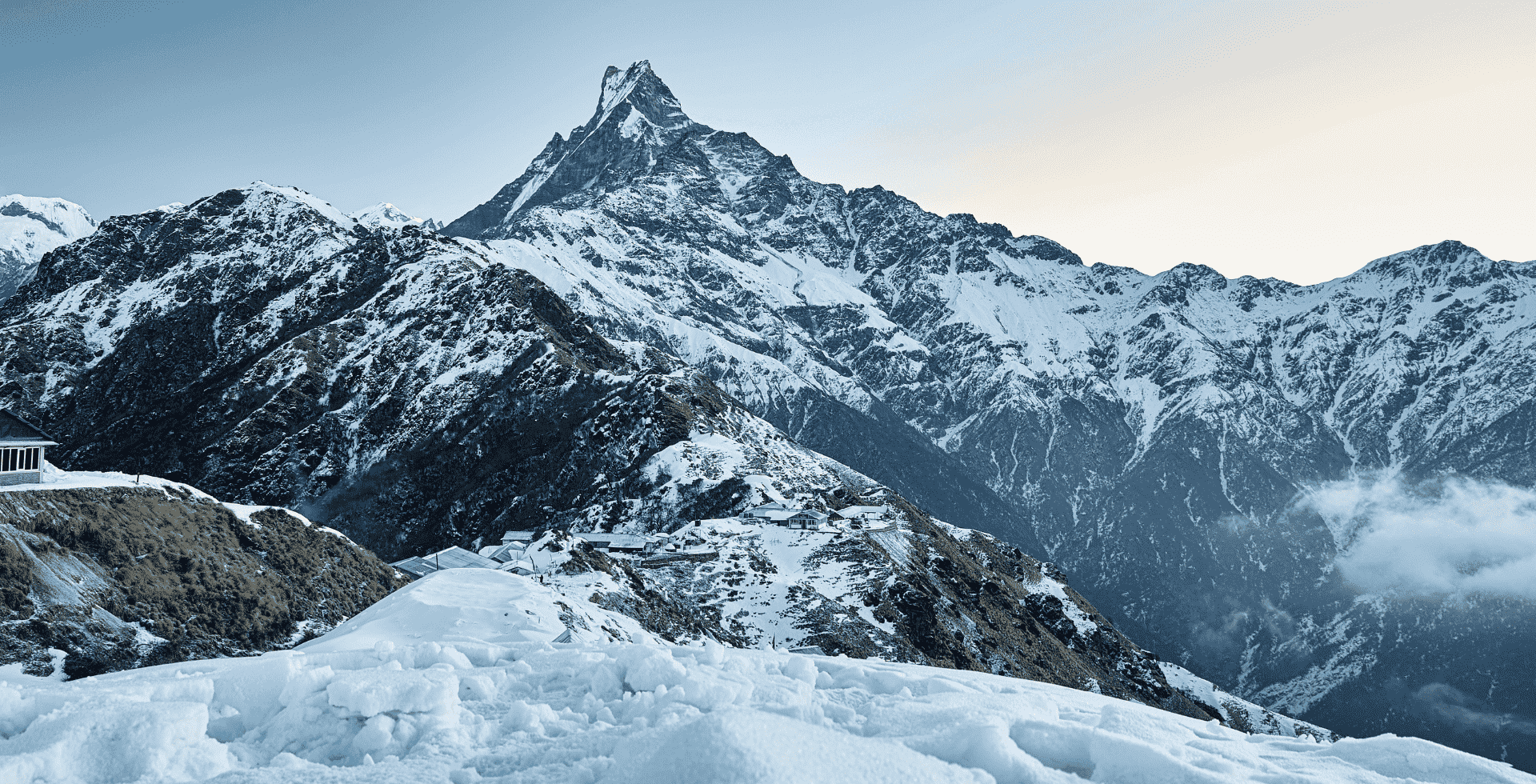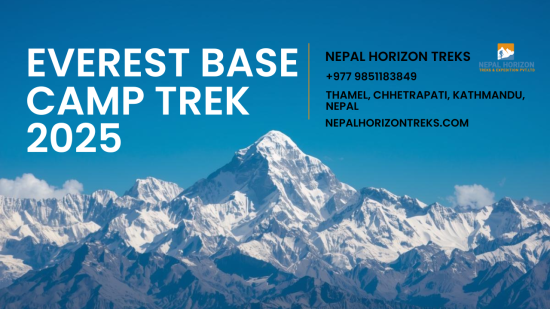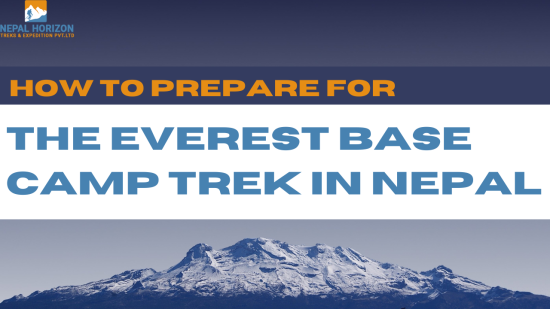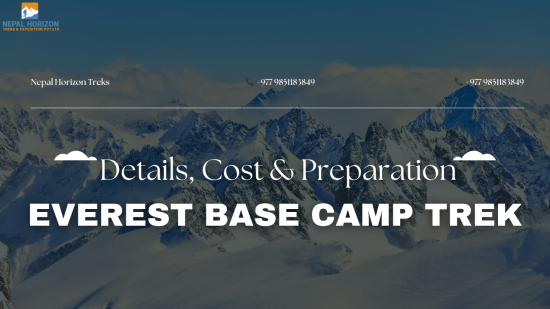Top best 10 Winter treks in Nepal
27th January 2023

Nepal experiences winter from December to February. Based on their personal experiences, many people, mostly from Europe or North America, believe that winters are severe and frequently snowy. This is untrue, though. Most regions in Nepal get a mild winter, and winter treks are well-liked there.
Globally speaking, cold air from the north pole moves south during the winter and eventually reaches practically all of North America and Europe. Most of North America and Europe experience subzero temperatures and significant snowfall as a result of this cold air. This is not applicable to Nepal, though.
The enormous Himalayas, which are Nepal's northern boundary, shield the country from the chilly air that migrates there. As a result, the majority of Nepal, particularly the mountains, plains, and valleys, do not get much snow. The majority of Nepal's snowfall is caused by the elevation. Yes, snow does fall at higher elevations throughout the winter, but only in a few localized spots. In Nepal, winter treks are therefore possible. Remember that only 15% of Nepal's entire land area is taken up by the Himalayas.
Few people travel to Nepal in the winter months. Some people are afraid to travel in the winter because they believe the cold will ruin their trip. Although some people may encounter difficulties while hiking in the winter, the experience is often enjoyable unless you travel to very high altitudes. The majority of high-altitude treks will be prohibited out of concern about avalanches and snow-blocked trails. However, there are a lot of simpler to moderate trek options that are ideal for travels throughout the winter.
Some of the most famous trekking destinations in nepal during winter are -
1. Everest base camp trek
The Everest Base Camp Trek is famed for its elegance, and the winter months make it even more stunning. While the majority are reluctant to visit EBC in the winter, not everyone enjoys the cold. EBC transforms into a wonderful location with breathtaking peaks, soaring freezing glaciers, and forested slopes throughout the winter. This is a little more challenging to do throughout the winter because of the bitter cold and snow. But if you have the right gear and clothing, you can complete the walk.
Since fewer people are out hiking during the winter, you'll have plenty of time to talk to locals. Although winter trekking can be a little difficult, the views in the Everest region are unmatched. Because of the clear skies, you can see the highest mountains in the world, including Mt. Lhotse (8,516 meters), Cho Oyu (8,201 meters), Mt. Makalu (8,463 meters), and of course Mt. Everest. The atmosphere of winter in the Everest region is unmatched, with snow-covered peaks, reviving glaciers, and frozen water bodies.
2. Everest view trek
The majority of people hope to visit Mount Everest at least once in their lifetime. However, not everyone may be able to make the climb to Everest Base Camp (5,364 m), due to a variety of factors. After all, getting to Everest Base Camp (EBC) is physically demanding and necessitates a fair amount of perseverance and resolve. Everest View Trek is a fantastic alternative as a result. This seven- to nine-day journey starts in Lukla and heads north to Tangboche (3,875 m). From Tangboche and the Everest View Hotel, you can see Everest in all its glory. Ama Dablam also appears seductive in Tangboche. Without having to take a long hike over the difficult terrain of the Himalayas, Everest View Trek offers tourists the chance to experience the magnificence of the Everest range. It is a straightforward hike that is doable for people of all ages. The Khumbu Valley's true rural Himalayan settlements will be crossed on this expedition. Small but endearing villages are where members of the Sherpa ethnic group live. The mountain views along this excursion are both breathtaking and moving.
3. Ghorepani poon hill trek
The Ghorepani Poon Hill trek, with a top elevation of only 3,210m, is a well-known winter trek destination. From the top of Poon Hill, you can see Hiunchuli, Annapurna South, Gangapurna, Khangsar Kang, Annapurna III, and Machhapuchhare, among other magnificent peaks, in their entirety. In the winter, snow accumulates on the trails at higher elevations, transforming them into stunning white blankets. Winter hikes on Ghorepani Poon Hill are suitable for practically everyone.
For this trail, no season is challenging or demanding. It provides a tempting package that compels the full enjoyment of Nepal's best hiking adventure. It has everything, including an opportunity to see the lively neighborhood and mountain vistas. Consequently, it is an amazing and simple journey. Poon Hill gives fantastic panoramic views of the mountain range in the winter when it is covered in snow.
4. Mardi Himal Trek
Winter is the best time to visit Mardi Himal Base Camp (4,500 m), which looks simply stunning. The "tourism capital of Nepal," Pokhara, is close to the trekking route.
Your journey will take you across suspension bridges, through typical ethnic settlements, and oak and rhododendron-filled woodlands. The path provides mysterious and majestic views of the Annapurna region's snow-capped mountains in the winter. The journey also includes breathtaking mountain views and surreal surroundings. Furthermore, despite being off the usual path, it's still a reasonable hike. You can get fantastic views of Annapurna, Dhaulagiri, Machhapuchhare, and Manaslu while trekking in the winter. Since this route is brand-new, fewer people will be using the trails in the winter.
Langtang valley trek
The Langtang Trek is one of the closest treks to Kathmandu and tops out at Kyangjin Ri at 4,773 meters. You will learn about the area's more than 70 glaciers throughout your walk. It is widespread due to the abundance of glaciers there. The Langtang range can be seen in its entirety from Kyangjin Ri, and it is spectacular when it is covered with winter snow. Himalayan monal, Himalayan tahrs, wild dogs, and snow leopards are among the animals that may be found in Langtang National Park. The exciting aspects of the tour are the beautiful environment and the authentic Tamang and Sherpa cultures.
The trek offers mountain views and can be done year-round despite being extremely difficult. In this valley, trekking is a beautiful winter activity. Similar to it, the location provides a lively and snowy ambiance that will feel nice to experience and record in your memories.
6. Langtang gosaikunda lake trek
A wonderful trek that provides you with a stunning vista of mountains and tranquil lakes is the Langtang Gosaikunda Trek. In the clear and tranquil lakes, the snow-capped mountains appear magnificent. And discovering these natural treasures in snowy weather is lovely. It doesn't involve a sedate tour of the Himalayan lakes. Its navigation includes the Langtang National Park and a number of other ethnic villages. It's pleasant to stroll through one town alongside the dense forest of rhododendrons and bamboos. Although it is a full experience, a winter trek is the ideal time to do it.
Trekkers thus get to enjoy the magnificence of the Himalayan views and the genuine culture of this region's inhabitants. Buddhists and Hindu devotees revere the Gosainkunda Lake as a sacred location. The lake doesn't freeze during the winter, and the mild snowfall adds to the area's allure.
7. Tamang heritage trek
Tamangs are ethnically tribal groups with Tibetan ancestry. In actuality, the Tamang word for "horse" is "Ta," and the word for "warrior," "Mak." The majority of Tamangs reside in hills just outside the Kathmandu Valley, and this trip focuses on introducing you to the Tamang way of life while letting you take in the scenery. Great views of the Gosainkunda range, the Langtang range, and Ganesh Himal will be available to you.
One of the characteristics of the Langtang Valley is the welcoming and pure Tamang culture. Meeting and learning about these indigenous peoples is incredibly intriguing. Individuals are free to maintain their own cultures, traditions, norms, behaviors, and beliefs.
8. Jomsom muktinath trek
You must hike in the winter if you want to see Muktinath blanketed with snow. This area, which is a dry desert, is in the Annapurna and Dhaulagiri hills' rain shadow. You will have the best views of the settlements as you go, and they won't fail to astound and impress you. Winter transforms Jomsom's typically brown terrain into a white, snowy one, giving you a radically different perspective.
Jomsom The majority of the stunning locations in the Annapurna region are included in the enjoyable journey to Muktinath. You'll pass by Kagbeni, Poon Hill, Kali Gandaki Gorge, Muktinath, and Jomsom on the walk. It is also possible year-round, but winter offers a different perspective.
9. Khopra ridge trek
Winter trekking is recommended if you want to see Muktinath completely covered in snow. The Annapurna and Dhaulagiri mountain ranges cast a dry desert across this area, where it is located. You will have the most impressive and breathtaking views of the communities as you go. You will see a drastically different scene in the winter, when the typically brown terrain of Jomsom is covered in white snow.
The majority of the stunning locations in the Annapurna region are included in the enjoyable journey to Jomsom Muktinath. You'll pass by Kagbeni, Poon Hill, Kali Gandaki Gorge, Muktinath, and Jomsom on the walk. It is also possible year-round, but winter offers a different perspective. For instance, snow will blanket the dry valley between Muktinath, Jomsom, and Kagbeni. In addition to these magnificent mountain views, the trip passes by the sapphire Kaire Lake, where you can witness an amazing reflection of the mountains.
10. Dhampus Sarangkot Trek
The Dhampus Sarangkot Trek is a well-known trekking trail near Pokhara. The journey is quick and simple. You can accomplish this quickly, even without a hiccup. For people of any age, it is also a doable trek. Additionally, this hike is appropriate for the winter. You shouldn't bring bulky hiking bags during the winter because this is a short trip.
Since this trek's highest point is 1,990 meters above sea level, anyone of any age can complete it, even in the winter. From the Australian base camp, Dhampus has clear mountain vistas and a light snowfall during the winter. Sarangkot offers a panoramic view of the colorful Annapurna Himalayas at sunrise and sunset. The greatest place to take a family holiday is the Dhampus Sarangkot Trek, which is also one of the top winter season treks in Nepal.
Advantages of trekking in Nepal during winter
-
Many lakes freeze over in the winter, providing unique picture opportunities that only a limited few hikers can enjoy.
-
Late evenings and very early mornings are the best times to go wildlife viewing because there are fewer people on the roads and trails, which encourages wild creatures to come out and play.
-
There will be more rooms available because there won't be as much bustle.
-
Locals are more likely to be spotted along the road because they work in their fields,.
-
Less tourists visit throughout the winter months than during the summer. You'll get away from the throng of hikers.
-
Typically, the sky is clear, and the visibility is excellent.
-
Because of the recent snowfall, the mountains look even more stunning.
Disadvantage of trekking in Nepal during winter
-
Due to the amount of snowfall, higher trails may be impossible.
-
Snowstorms can be problematic in some situations.
-
Your laundry may take a very long time to dry.
-
You will wear more layers as the temperature drops, up to four or five in frigid conditions.
-
Snow is particularly likely to hinder high-altitude railways.
-
Flight delays and cancellations may be brought on by strong winds and significant snowfall.
Recent From Blogs

28th October 2025

25th October 2025

24th October 2025

18th October 2025

14th October 2025

12th October 2025

10th October 2025

7th October 2025






